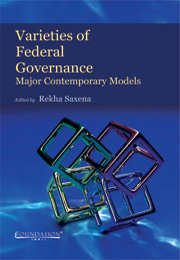Book contents
- Frontmatter
- Contents
- List of Contributors
- Foreword
- Acknowledgements
- Introduction
- I Theoretical and Comparative Dimensions
- II Presidential Federal Systems
- III Commonwealth Parliamentary Federations
- 8 Constitutional Normalization in Canada: The Significance of Failure of the Charlottetown Agreement
- 9 The Australian Senate: Form, Function and Effectiveness
- 10 Federalizing India's Political Parties: National All-India and National Interstate Parties
- 11 Malaysia: Centralized Federalism in an Electoral One-Party State
- 12 Promises Unmet: Multi-level Government in South Africa
- IV Non-Commonwealth Parliamentary Federations in Afro-Asia
- V European Parliamentary Federations
- VI Devolutionary Systems
- VII Supranational Confederalism/Federalism?
12 - Promises Unmet: Multi-level Government in South Africa
from III - Commonwealth Parliamentary Federations
Published online by Cambridge University Press: 05 June 2012
- Frontmatter
- Contents
- List of Contributors
- Foreword
- Acknowledgements
- Introduction
- I Theoretical and Comparative Dimensions
- II Presidential Federal Systems
- III Commonwealth Parliamentary Federations
- 8 Constitutional Normalization in Canada: The Significance of Failure of the Charlottetown Agreement
- 9 The Australian Senate: Form, Function and Effectiveness
- 10 Federalizing India's Political Parties: National All-India and National Interstate Parties
- 11 Malaysia: Centralized Federalism in an Electoral One-Party State
- 12 Promises Unmet: Multi-level Government in South Africa
- IV Non-Commonwealth Parliamentary Federations in Afro-Asia
- V European Parliamentary Federations
- VI Devolutionary Systems
- VII Supranational Confederalism/Federalism?
Summary
Introduction
In its 1996 Constitution, South Africa adopted a system of multi-level governance divided into three ‘spheres’ of government – national, provincial and local – that are to be ‘distinctive, interdependent and interrelated’ [Section 40(1)]. Each is established by the Constitution, each has assigned powers, and each is independently elected. In addition, sovereignty is divided – provinces must agree to certain fundamental constitutional amendments. Thus, South Africa bears the hallmarks of a federation – albeit a highly centralized one. Nine provinces were established at the outset of the democratic dispensation. The system of ‘wall to wall’ local government extending from the dynamic metropolises of Johannesburg, Cape Town and Durban to the remotest rural areas was established a few years later.
But when a new constitutional model for a democratic South Africa was first discussed in the early 1990s, the African National Congress (ANC) and others in the freedom movement were deeply suspicious of federalism. It was the out-going white-dominated Apartheid regime and the Zulu-nationalist Inkatha Freedom Party that insisted on federalism as a condition of a final constitutional settlement. The out-going regime believed that federalism would contribute to limited government and restrain the majority that was about to take office. Some harboured the dream that in a federal South Africa there might be room for an Afrikaans province or homeland. The ANC acquiesced, but remained deeply reluctant federalists. For the ANC, federalism and decentralization were indelibly linked to the Apartheid model of Bantustans – quasi-autonomous puppet regimes that would deny Black South Africans full citizenship in the country.
- Type
- Chapter
- Information
- Varieties of Federal GovernanceMajor Contemporary Models, pp. 232 - 260Publisher: Foundation BooksPrint publication year: 2011
- 2
- Cited by



